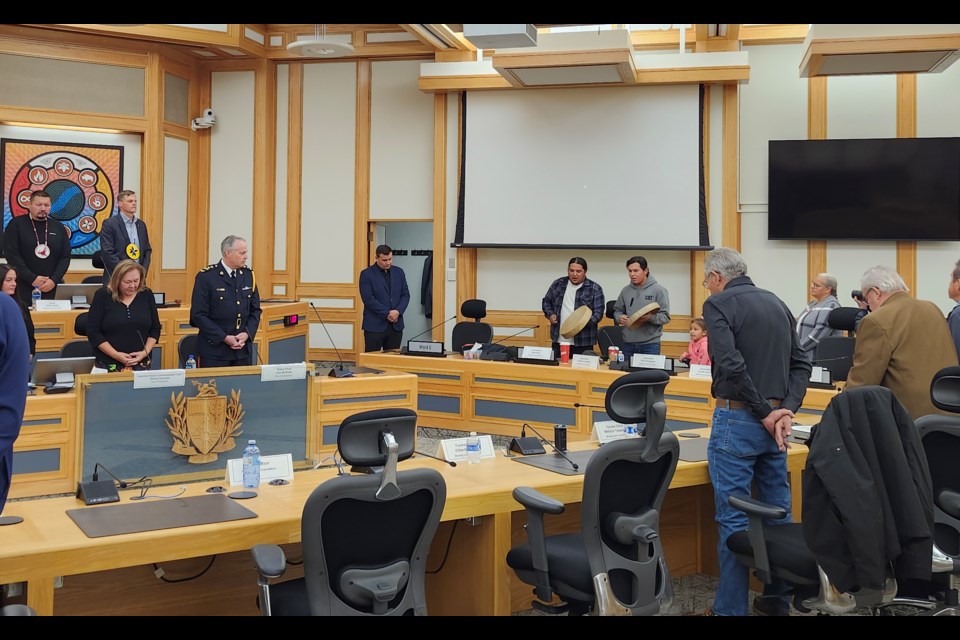SASKATOON—Muskeg Lake Cree Nation Chief Kelly Wolfe recalled 小蓝视频 transported by an orange bus from the village of Marsden to Sutherland when he was nine years old so that he and other youth could witness the groundbreaking of the land that is now a fully developed Asi Magin Sikan Aski Urban Reserve.
That was on Oct. 1, 1988, after the land was purchased in partnership with the City of Saskatoon under then-Mayor Cliff E. Wright. The urban reserve was transformed into a vital economic hub in Sutherland, where 50 businesses employ approximately 750 people. MLCN also owns the Creeway West Petro Canada urban reserve on 22nd Street West.
Now, the city and MLCN have again signed a new urban reserve agreement on Wednesday, Oct. 16, at the Council Chamber, with Wolfe, Mayor Charlie Clark, and Saskatoon Board of Police Commissioners Chair Shirley Greyeyes signing the document. This will be MLCN's third urban reserve, which is located in Aspen Place, adjacent to the existing one in Sutherland.
The land at 125 Aspen Place is now designated First Nations land. It is adjacent to the existing Asi Magin Sikan Aski Urban Reserve, which became Saskatoon and Canada's first commercial urban reserve. MLCN Council members, their elders, and five Saskatoon Councillors witnessed the event.
"I'll never forget that day like it was yesterday, and the reason why is because of the traditional values and the traditional laws that our leadership continue to pass on to this day, and it's about including our youth, including our young people. I was going to school, and a big orange bus picked us up that day and brought us to Sutherland," said Wolfe.
"I didn't exactly know why. I was too young to understand, but when we arrived, we understood that our nation had purchased a piece of land. When you went out there as a kid, you saw the land. I remember seeing train tracks; it was a special day for the community. I'll never forget the importance of our leadership ensuring that our youth were also a part of this."
He added that he was thankful to the MLCN leadership for having him and other young people witness the 小蓝视频 in 1988, which, after almost 40 years, has seen the development in Packham Avenue that is now worth $100 million in assets.
"As we hold the baton now, we [the MLCN Council] must ensure we expand on the foundation laid before us. Because there's going to become a time where we're going to have to pass that baton, and we're going to do our best to ensure that we expand on that foundation, but also continue to practice on passing on our traditional values, customs, and laws," said Wolfe.
"We want to ensure all the acres of the land are fully developed. At the same time, we will ensure we get a good return on our investment and that our members have employment opportunities. Those will be our benchmarks," Wolfe told SaskToday.
Clarke said the 1988 agreement between MLCN and the City of Saskatoon was a historic day for Canada. It paved the way for other cities to partner with other First Nations communities to create urban reserves that proved beneficial to all.
"[MLCN] and the City of Saskatoon have seen tremendous benefits from this partnership and friendship ever since. Today [Wednesday, Oct. 16] we build on this relationship by signing our third reserve agreement to create opportunities for both communities for generations to come," said Clark.




